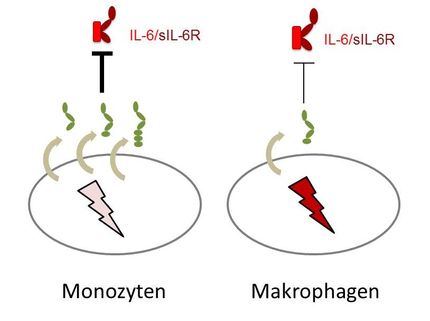Scientists remove amyloid plaques from brains of live animals with Alzheimer's disease
New research in the FASEB Journal suggests that manipulation of the brain's own immune cells with IL-6 could lead to reversal of Alzheimer's disease pathology
Advertisement
A breakthrough discovery by scientists from the Mayo Clinic in Jacksonville, FL, may lead to a new treatment for Alzheimer's disease that actually removes amyloid plaques—considered a hallmark of the disease—from patients' brains. This discovery, published online in The FASEB Journal, is based on the unexpected finding that when the brain's immune cells (microglia) are activated by the interleukin-6 protein (IL-6), they actually remove plaques instead of causing them or making them worse. The research was performed in a model of Alzheimer's disease established in mice.
"Our study highlights the notion that manipulating the brain's immune response could be translated into clinically tolerated regimens for the treatment of neurodegenerative diseases," said Pritam Das, co-author of the study, from the Mayo Clinic in Jacksonville, FL.
Das and colleagues made this unexpected discovery when they initially set out to prove that the activation of microgila trigger inflammation, making the disease worse. Their hypothesis was that microglia would attempt to remove the plaques, but would be unable to do so, and in the process cause excessive inflammation. To the surprise of the researchers, when microglia were activated by IL-6, they cleared the plaques from the brains.
To do this, the researchers over-expressed IL-6 in the brains of newborn mice that had yet to develop any amyloid plaques, as well in mice with pre-existing plaques. Using somatic brain transgenesis technology, scientists analyzed the effect of IL-6 on brain neuro-inflammation and plaque deposition. In both groups of mice, the presence of IL-6 lead to the clearance of amyloid plaques from the brain. Researchers then set out to determine exactly how IL-6 worked to clear the plaques and discovered that the inflammation induced by IL-6 directed the microglia to express proteins that removed the plaques. This research suggests that manipulating the brain's own immune cells through inflammatory mediators could lead to new therapeutic approaches for the treatment of neurodegenerative diseases, particularly Alzheimer's disease.
"This model is as close to human pathology as animal models get. These results give us an exciting lead to newer, more effective treatments of Alzheimer's disease," said Gerald Weissmann, M.D., Editor-in-Chief of The FASEB Journal. "This study demonstrates that investment in experimental biology is the best way to approach the challenge posed by an aging population to the cost of health care."


















































